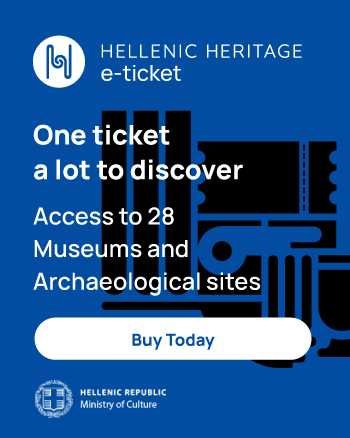About the Museum
The beautiful building which today houses the Museum of History of the Ancient Olympic Games in Olympia, was built in the 1880s and was one of the first provincial museum of Greece. Here were housed for the first time the artistic and historical treasures of Olympia, the Hermes of Praxiteles, the Nike of Paionios, the sculptural decoration of the temple of Zeus and dozens of findings of the systematic excavations, which were in progress since 1875 under the responsibility of the German Archaeological Institute. All these magnificent works of art have been exhibited since the end of the 1970s in the New Museum of Olympia.
In consideration of the Olympic Games “ATHENS 2004”, the old and abandoned museum of Olympia, undergoes full restoration and on 24th March 2004 officially opens to the public as the Museum of the History of Olympic Games of Antiquity.
The exhibition deals with important moments of the more than thousand year history of Olympic and other Panhellenic Games (Pythian, Isthmian, Nemean, Panathenaic) such as: the prehistory of athletic sports, the beginning of the games in Olympia, Zeus and his worship, Elis and its role in the organization of the games and also the preparation of the athletes, women and athletic sports, the sports, the winners of the games, e.t.c.
One of the unique elements of the museum, is that its archaeological exhibits (about 400 ancient works) come from not only Olympia but also from many important archaeological sites, historical places and ancient cities of Greece. These works (clay vases, statues, mosaics, bronze figurines and statuettes, equipment of athletes and sports, coins e.t.c.) have been granted in the form of long duration loans from ephorates and museums of the Ministry of Culture and Sports and in total cover a large chronological spectrum, from the 2nd millennium BC to the 5th century AC.
At the beginning of 2019 a challenging museological work, the reconfiguration of the archaeological exhibition and basically the upgrading and the enriching of the halls and showcases with rich visual material and short texts. This was successfully completed, by the staff of the Ephorate of Antiquities of Ilia, and constitutes a new phase in the long history of the museum.
The exhibition in the Museum of the Olympic Games of Antiquity in Olympia is the necessary continuation of the history of the sanctuary of Zeus of Olympia, which is presented in the New Archaeological Museum of Olympia. Thus, the two museums, together with the small Museum of the History of the Excavations in Olympia, mutually complementary, are inviting in a beautiful and continuous dialogue the thousands of Olympia visitors.


Γίνετε μάρτυρες των Αρχαίων Αγώνων με ένα πολυποίκιλο πλήθος άνω των 45.000 ατόμων και μιας διαρκούς πολιτιστικής κληρονομιάς.
ΜΟΥΣΕΙΟ ΤΗΣ ΙΣΤΟΡΙΑΣ ΤΩΝ ΟΛΥΜΠΙΑΚΩΝ ΑΓΩΝΩΝ ΤΗΣ ΑΡΧΑΙΟΤΗΤΑΣ
© 2024 ΜΟΥΣΕΙΟ ΤΗΣ ΙΣΤΟΡΙΑΣ ΤΩΝ ΟΛΥΜΠΙΑΚΩΝ ΑΓΩΝΩΝ ΤΗΣ ΑΡΧΑΙΟΤΗΤΑΣ . Built using WordPress and the Mesmerize theme


